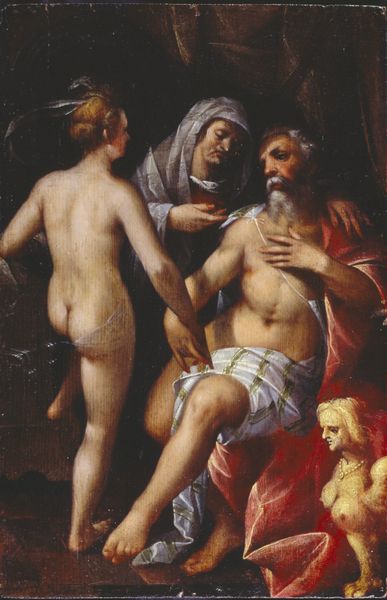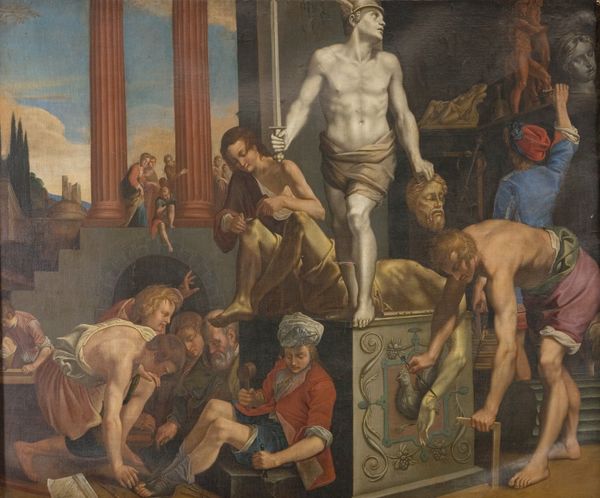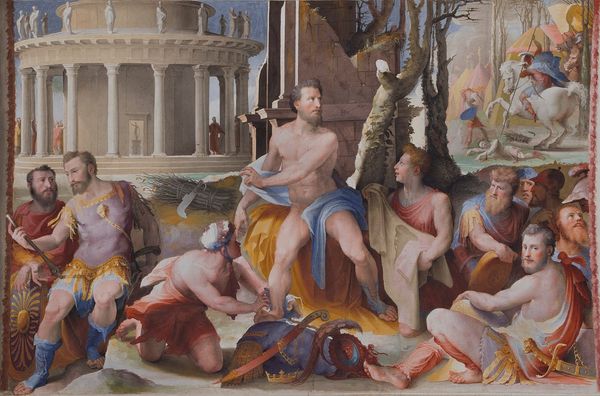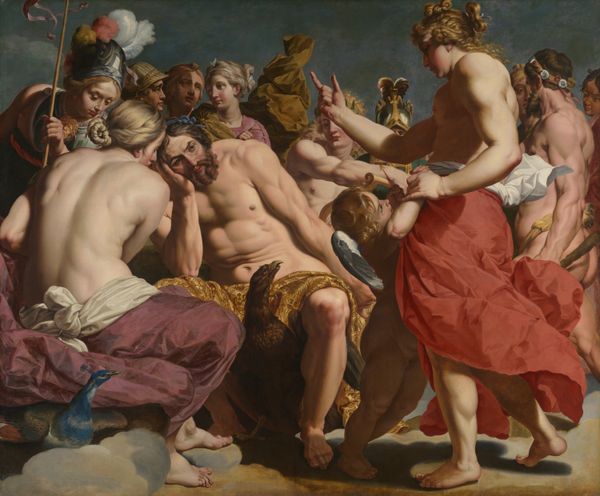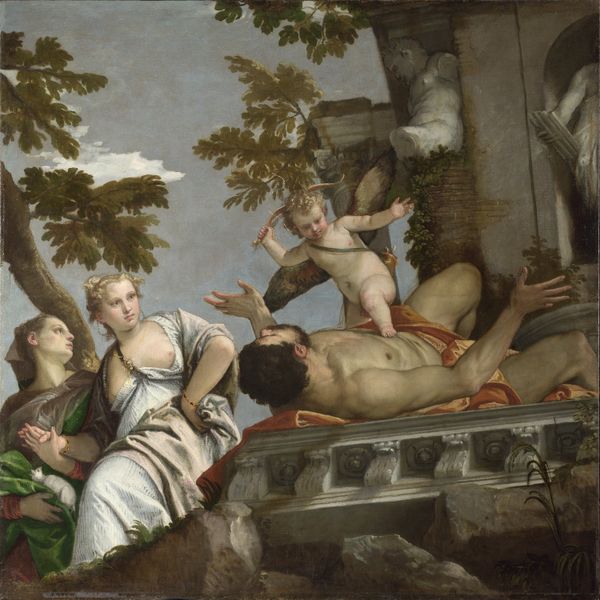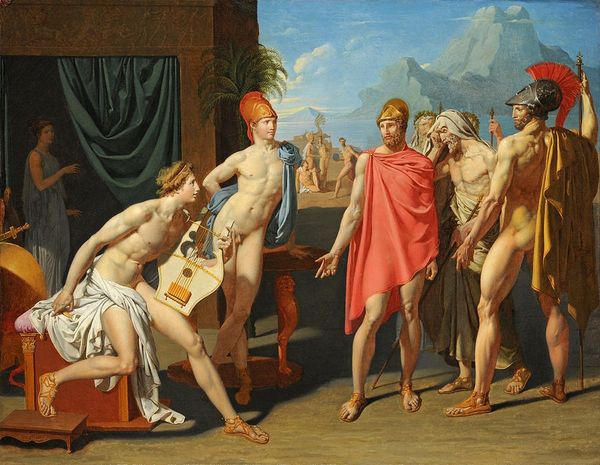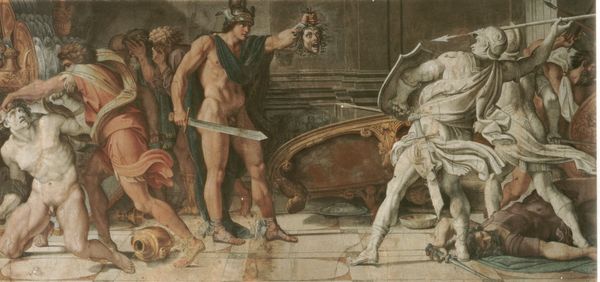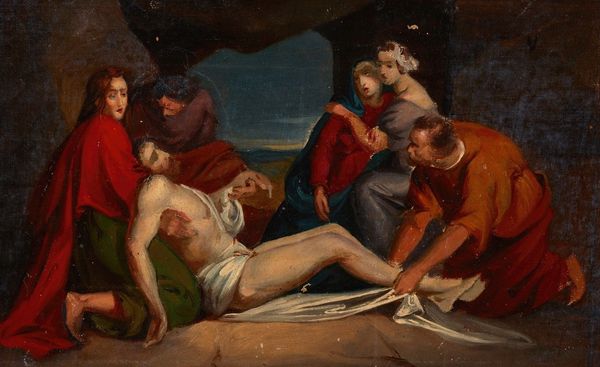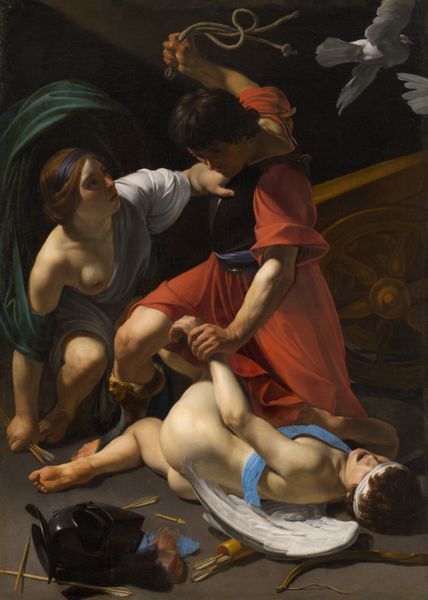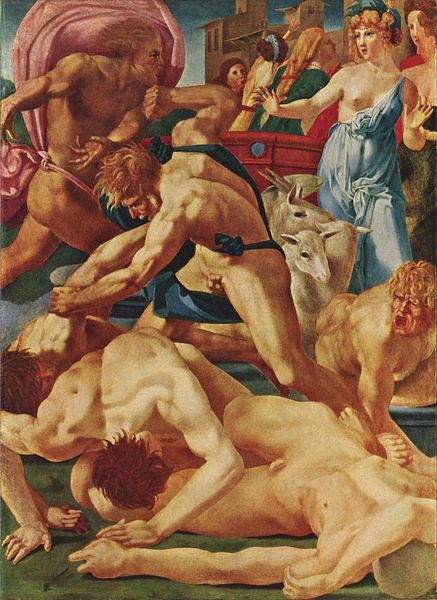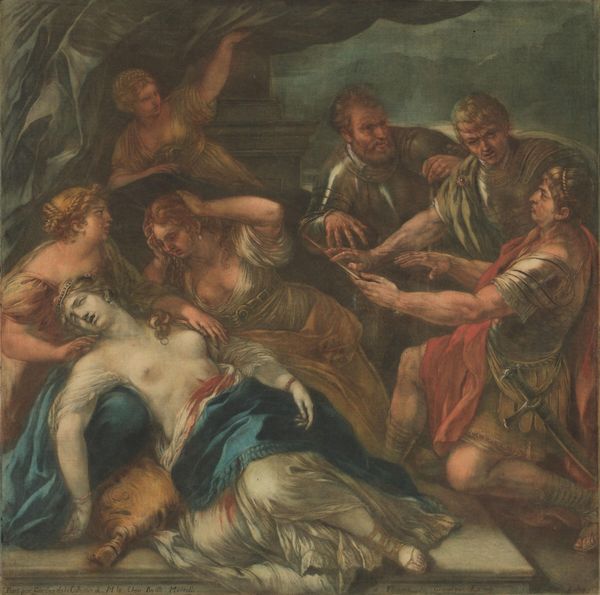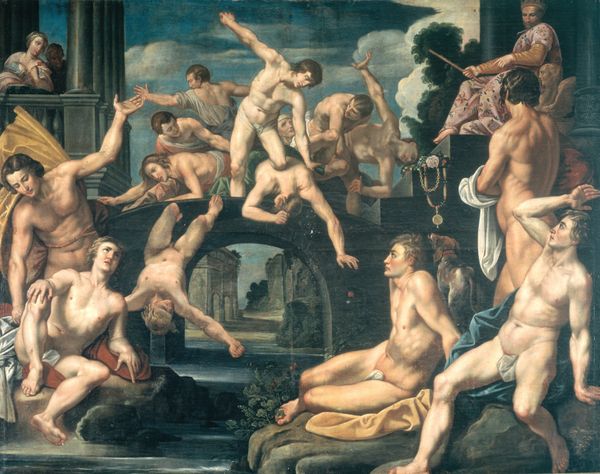
Dimensions: 131 cm (height) x 126 cm (width) (Netto)
Editor: Jacopo Bassano's "The Decapitation of St John the Baptist," executed in oil on canvas sometime between 1548 and 1551, is arresting. I am immediately struck by the dynamism inherent in the composition and the earthy tones used to depict such a violent scene. What structural elements jump out to you? Curator: The painting certainly presents a compelling structure. Consider the stark contrast between the executioner, solid and present with his back to us, and the prone figure of John, vulnerable and about to be violated. This creates a spatial tension. Furthermore, the cool detachment of those feasting contrasts violently with the brute deed. How do these arrangements contribute to the painting’s meaning? Editor: The clear distinction emphasizes the injustice of the situation, perhaps highlighting the corruption within power. But is the style itself significant? This has been labelled a Baroque painting. Curator: Indeed. While some might focus on expressive qualities in a more typical understanding of the baroque style, Bassano seems equally invested in its formal elements: consider the use of dramatic chiaroscuro to heighten the emotional impact and theatricality of the scene, almost as if directing the viewer's gaze with these alternating planes of sharp contrast. Note the stark illumination against darker receding backdrops in the rear corners, left and right, like the staging of a play. Does the coloration strike you in particular ways? Editor: The palette certainly seems muted, focusing on browns, tans, and off-whites. The touches of blues and greens that are there feel very intentional and considered, drawing the eye carefully. Curator: Precisely. Color here underscores, not distracts, from the central dynamic. So it seems a tight visual structure is being established in line, shadow and pallete that leads us to see it in particular ways. An economy of design, yet deeply suggestive in this tragic figuration. Editor: I hadn't considered how the painting directs the viewer so purposefully through color and light. Curator: I’m glad to offer that lens. I’ve learned something, too. These structures can change under differing gazes and needs, just as a good story may have different layers, and reveal diverse wisdom over time.
Comments
No comments
Be the first to comment and join the conversation on the ultimate creative platform.
